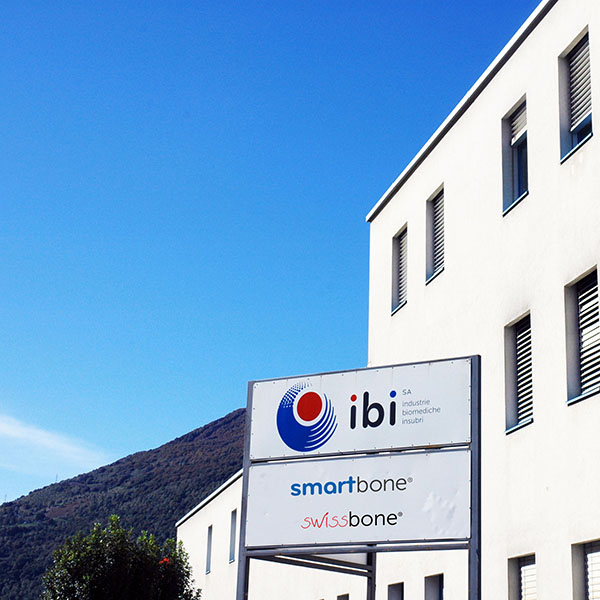CLOSE


Recently we published our page dedicated to the project SmartBone Lyo, discover in this interview who are behind it!
Prof. M. Torre: Hello, I am Associate Professor at the Department of Pharmaceutical Sciences, University of Pavia. I have been coordinating since 2005 the “Cell Delivery System” laboratory where we develop prototypes of cell-based medicines for Regenerative Medicine. They are called Products for Advanced Therapies and, in particular, we realize Somatic Cell Therapy and Tissue Engineering products. My research group has always been involved in mesenchymal stem cell delivery.
In recent years, however, international research (and therefore us as well) has turned towards the study of mesenchymal cell secretion. This is because it was discovered that the biological activity of stem cells depends mainly on the substances they produce; together these substances are called secretome. More specifically, the possibility of producing the secretome in the laboratory and converting it into a drug has become a challenge because one could obtain therapeutic effects similar to those obtained with the cells but using a product much easier to manage and use.
In my laboratory a freeze-dried pharmaceutical product containing mesenchymal stem cell secretome has been created. The product and the process are the subject of a European patent and the intellectual property has been transferred to PharmaExceed, a non-participating spin-off of the University of Pavia.
Dr. E. Bari: Good morning, I studied Pharmacy, and then I did my PhD in chemical and pharmaceutical sciences at the University of Pavia. Currently, I work as a post-doc researcher in the Cell Delivery System lab of Prof. Torre, where I carry out my research in the field of advanced therapies and regenerative medicine. In recent years we faced the challenge to take the secretome stem cells send out, both as free soluble proteins and extracellular vesicles, and formulate it as a new medicinal product.
Prof. M. Torre: I got to know the product because IBI is a partner in the ATEx partnership, a project financed by the Intereg Italy-Switzerland framework that sees the participation of both the University of Pavia and PharmaExceed, under the coordination of the University of Eastern Piedmont and the scientific responsibility of Professor Lorena Segale of the Department of Pharmaceutical Sciences.
Dr. E. Bari: I discovered SmartBone during the ATEx (Advanced Therapy Experiences) project funded by Interreg Italy-Switzerland. This project aimed to foster collaboration between partners active in research and development activities in the medtech and biotech fields located in Italy and Ticino. In this way, we have been able to create a new knowledge platform capable of translating brilliant ideas into advanced products to treat various pathologies. And the combination between SmartBone and Lyosecretome is one great example.
Prof. M. Torre: The idea of supporting the Lyosecretome on existing scaffolds on the market stems from the fact that already mesenchymal cells (from which the secretome derives) are advantageously carried on three-dimensional structures. Therefore, based on the experience gained over the years, we thought of loading the Lyosecretome on various types of scaffolds: the smartbone but also 3D bio-printed scaffolds with polymeric or inorganic materials such as porous titanium.
Dr. E. Bari: Advanced therapies often combine biomaterials of various origins (animal or human) and stem cells or derivatives. We have been able to turn secretome from Mesenchymal Stem Cells into a format that is easily adoptable by the clinical community, and in the context of bone regeneration, it can support an organized osteogenic process thanks to its richness in growth factors. Thus, we searched for a scaffold that could deliver Lyosecretome and provide support and proper mechanical properties for the bone, and SmartBone seemed an excellent candidate.
Prof. M. Torre: Lyosecretome contains a soluble protein fraction and extracellular vesicles (microvesicles and exosomes). Once loaded onto the bone substitute, Lyosecretome gives Smartbone and many other materials improved performance because they reproduce a microenvironment that promotes adhesion, cell growth and regeneration by the cells residing in the tissue. The scaffold is therefore more easily integrated into healthy tissue.
Dr. E. Bari: Lyosecretome can boost the bone regenerative properties of SmartBone®. In detail, in vitro tests demonstrated that the combination of SmartBone® and Lyosecretome improved cell proliferation and induced the formation of well-organized bone tissue, with a higher quantity of newly formed trabeculae. Moreover, in the presence of lyosecretome, mesenchymal stem cells seeded on the SmartBone® differentiated into osteoblasts and were able to mineralize after 60 days.
Prof. M. Torre: We are only at the beginning of the development of these very innovative products: before they are available on the market, it will be necessary to carry out preclinical studies on animal models and then clinical trials to demonstrate efficacy and safety. At the same time, from a technological point of view, the process that has been developed on a laboratory scale will have to be carried out on an industrial scale.
Dr. E. Bari: We want to make sure that SmartBone® combined with Lyosecretome truly reaches the patient. But there is still much to do before its clinical application on humans. So, we are working on testing the efficacy in vivo, on animal models, and if the results will be promising, also on humans. Since both trials are expensive we are working to find the necessary funds to start them.
Prof. M. Torre: Thank you
Dr. E. Bari: thanks to you for the interview. I hope there will always be space for this kind of projects in the future, and see you soon!

IBI SA
Industrie Biomediche Insubri SA
via Cantonale 67, CH-6805 Mezzovico-Vira, Switzerland
t. +41 91 93.06.640
f. +41 91 220.70.00